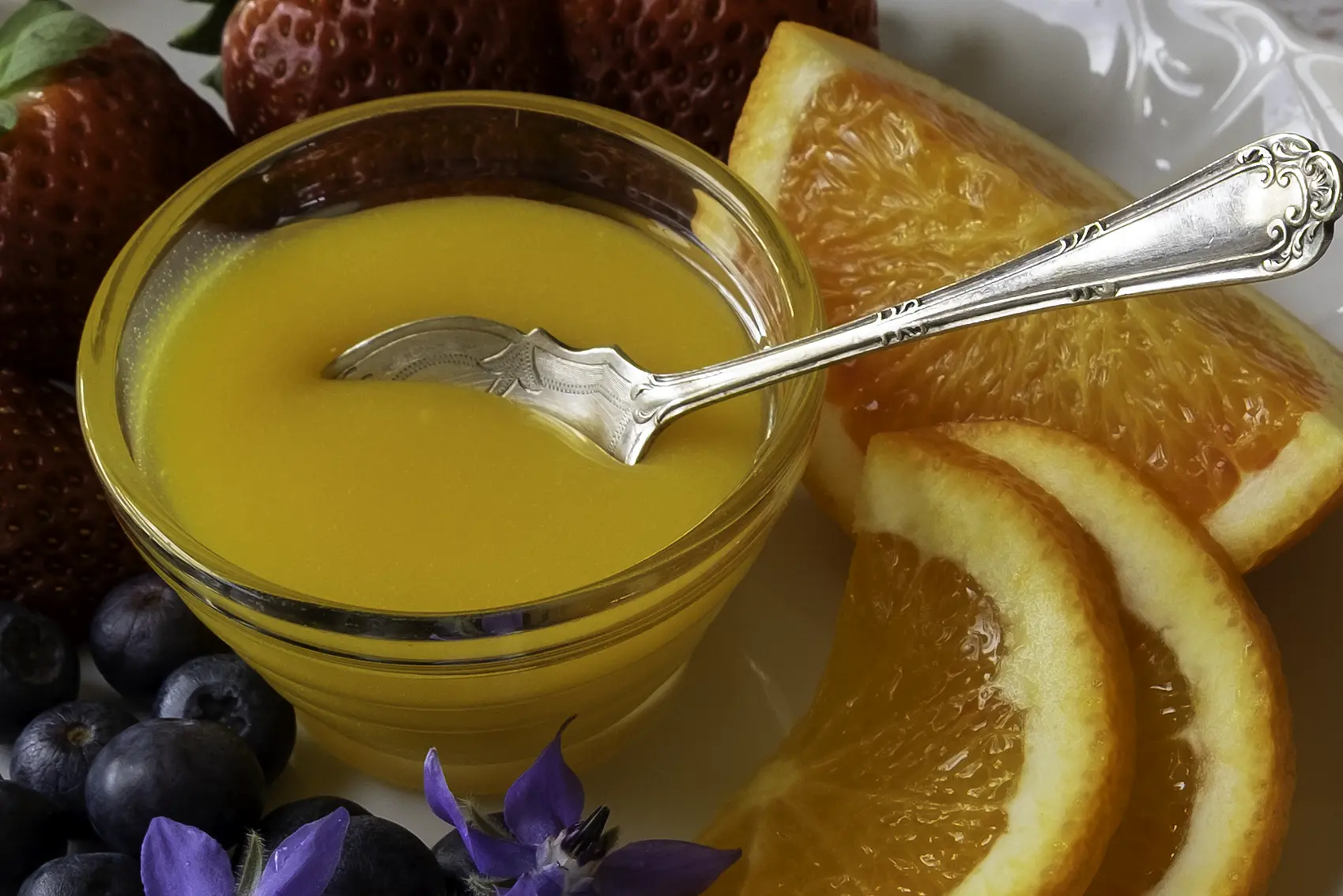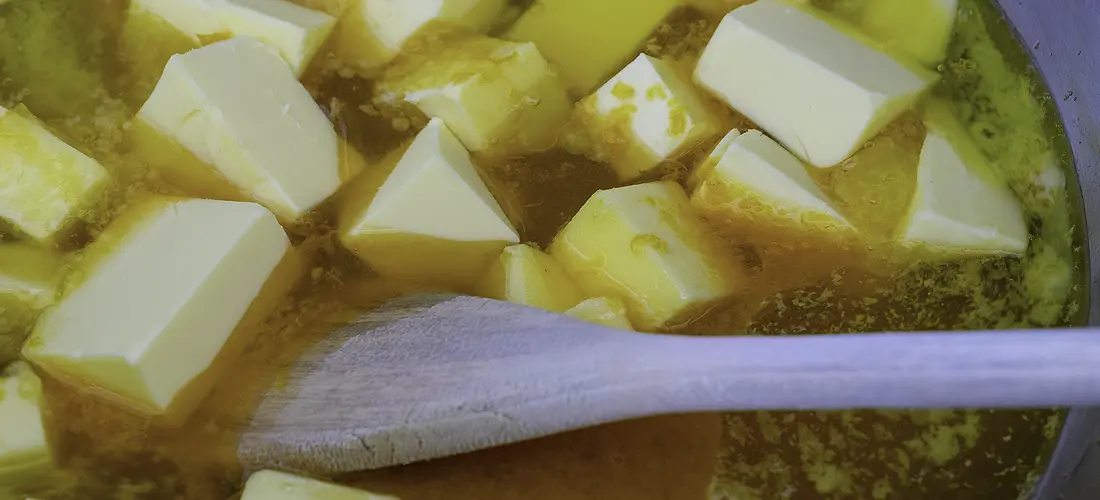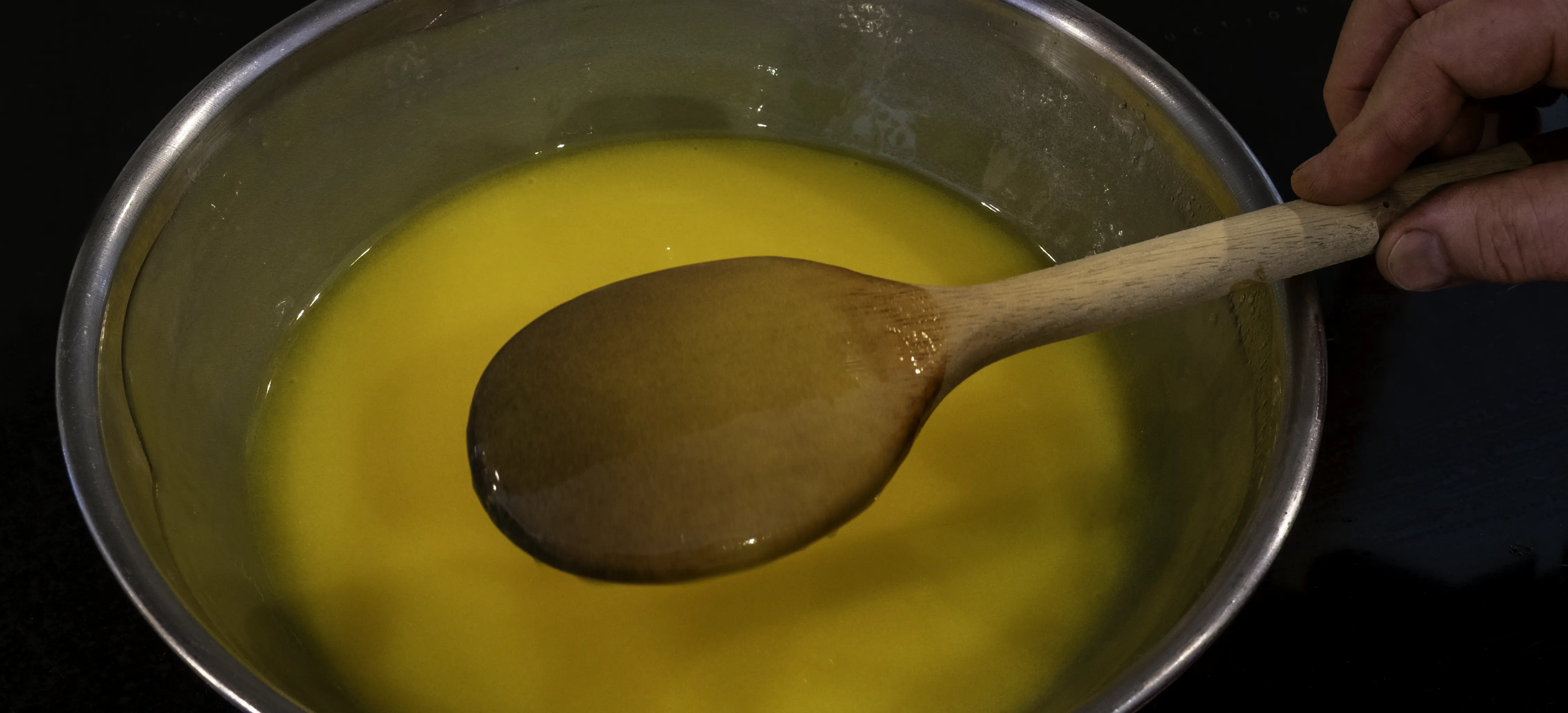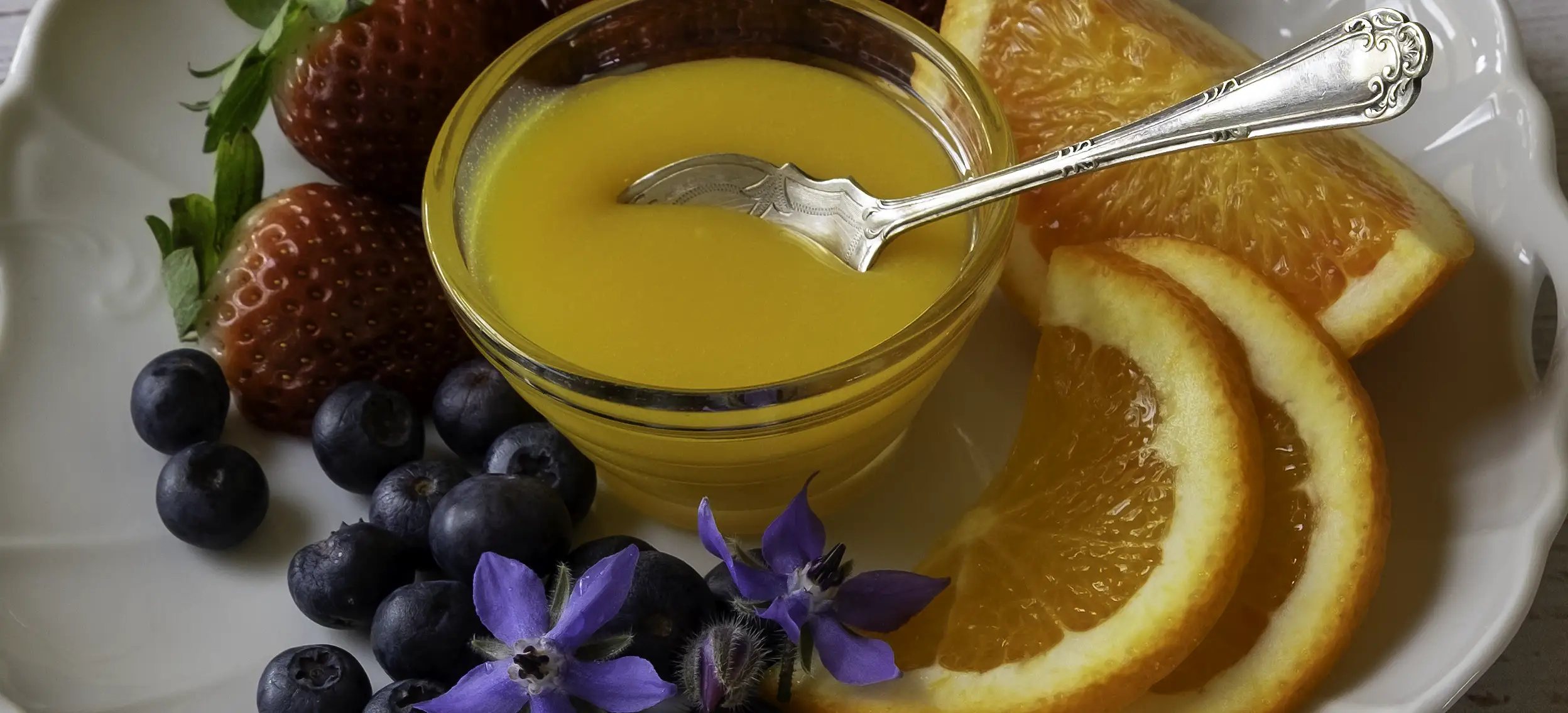
Culinary Capers of the Curd
- Fruit Cheeses, Butters & Curds
Fruit curd, fruit butter and fruit cheese, a part of the sweet preserve’s family, sit happily beside jam, jelly, and marmalade. Though not readily available in supermarkets, they are making a triumphant comeback in gourmet food stores, farmers markets and in the home kitchen. All capture the colour and flavour of the seasons. Fruit cheese and butter are made from pureed cooked pulp, then boiled with sugar until thick. The perfect fruit cheese is thick enough to cut into sharp, clean slices to sit neatly on a rustic cheese board, Ploughmans Lunch, or an antipasto platter. The perfect fruit butter is thick, textured, but spreadable. A knifeful should glide graciously across hot crumpets so revered on cold misty mornings, or a thick swathe should glisten between the airy layers of a Victoria Sponge. Using a high proportion of fruit to the final yield, they are perfect for dealing with a seasonal glut, windfalls, and damaged fruit. Kitchen and orchard waste is easily transformed into a sweet treat. Fruit curd, on the other hand, transforms freshly squeezed citrus juice and rind, sugar, butter, and eggs, into a seductive pool of deliciousness.
Fruit curd - the high priestess - is sophisticated, elegant, irresistible.
It’s winters answer to a mounting glut of citrus and freshly laid eggs that can’t be reduced by baking alone. The cooking technicalities to produce the perfect curd - a rich glossy silken texture and luscious appearance that drives a desire to consume more, are easily learnt - but it demands a gentle, coaxing hand otherwise its scrambled texture from overcooked egg disappoints.
Jams, jellies, marmalade and the fruit cheeses and butters, a simple mix of fruit pulp, rind or juice and sugar, must be vigorously boiled. This drives the miraculous chemical reaction between fruit pectin, acid and sugar that creates their signature gelled consistency. But this is not the way to treat a curd.
 In a double boiler gently melt the butter into the juice and sugar mixture.
In a double boiler gently melt the butter into the juice and sugar mixture.
Never let the egg mixture curdle when making a curd
Eggs start to cook at 62 C (144 F). Sitting amongst the other curd ingredients, as the temp rises above 62 C, when the mixture gets too hot (above 83 C, 181 F), the egg proteins curdle and a course, grainy, scrambled texture develops. So beware, curd is temperature sensitive and should be buffered from direct high heat. The secret is to cook it in a double boiler or saucepan. A stainless-steel pot or basin sits inside a slightly larger pot with simmering water to produce steam as a gentle indirect heat source. The simmering water should sit below the inner pot or bowl, but do check regularly to make sure the bottom pot doesn’t boil dry.
 Once the eggs have been added cook gently until the mixture coats the back of a wooden spoon
Once the eggs have been added cook gently until the mixture coats the back of a wooden spoonGently, gently gently cook your curds
Lemon curd is the classic. However, since the curds renaissance, orange, mandarin, blood orange, grapefruit and lime flavours have appeared in the citrus stable as well as black currants, apricot, passionfruit, raspberry and other members of the berry family. Any fruit that produces an intense juice will work. Keep in mind though as you experiment, the egg quantity may need to be varied. If it doesn’t set up after it’s cooled, spoon back into the double boiler, add another lightly whisked strained egg and cook gently again.
Here's my lemon curd and passionfruit curd recipe, but before launching into your own curd capers here’s my top ten tips for making the perfect curd:
- Melt the butter, sugar, juice, and zest in the double boiler and stir continuously until the sugar has completely dissolved.
- Gently whisk the eggs until no egg white is visible. Do not vigorously or over beat the eggs before adding to the mixture as this can result in bubbles in the finished curd.
- Strain the beaten eggs into the curd. This is to prevent any cooked lumps of egg white. This is a precautionary step just in case you didn’t combine the egg whites and yolks enough.
- Stir constantly until the mixture begins to thicken and coats the back of a wooden spoon. Never let it boil. This back-of-the-spoon cooking technique is the traditional method. Alternatively, insert a digital thermometer into the mixture and cook until it reaches 82 C/179 F (maximum), stirring constantly. Once the temp has been reached, remove and pot up immediately.
- Regardless of the technique used, if the mixture starts to curdle, remove immediately from the heat and whisk vigorously for a few minutes. This should get rid of the curdled effect if it hasn’t gone too far. Place over low heat again and stir constantly until it covers the back of the wooden spoon or cook to 82 C. Don’t be tempted to overcook it.
- Do not use the hot preserve, hot jar, and hot lid - HHH method for fruit curds. Potting into hot jars can cause the outside section of the curd, that’s in contact with the jar, to continue to cook and cause it to curdle around the edges. Instead, sterilise the jars in advance, transfer to a cooling rack and cover with a clean dry tea towel to make sure they are ready so the curd can be potted up immediately.
- Fill the jars to the brim, it shrinks and thickens as it cools. Use a combination of paraffin wax and transparent cellophane discs to seal. Any other type of cover tends to encourage mould.
- Citrus will vary in the amount of juice they give from season to season and across different varieties. Use recipes that specify the amount of juice rather than the number of fruit. If at the end of the prescribed cooking time, or if the curd does not thicken, strain and add another lightly whisked egg into the mixture and cook for another 5-10 minutes.
- Do not use salted butter as this can mar the flavour. Unsalted margarine can be used instead of butter, but the flavour and the texture will not be the same.
- Fruit curd should be used within three weeks, but it can keep up to six weeks if stored correctly. Always store unopened and opened curd in the fridge. Cooking in small batches and potting up in smaller jars ensures the curd will be eaten within the recommended storage guidelines.
 Lemon Curd
Lemon CurdCare, patience and a watchful eye are the cook’s handmaidens when making fruit curd. Remove any likely distraction before embarking upon your culinary curd capers and enjoy the meditative rhythm of gently stirring the curd into your own decadent pool of deliciousness.
